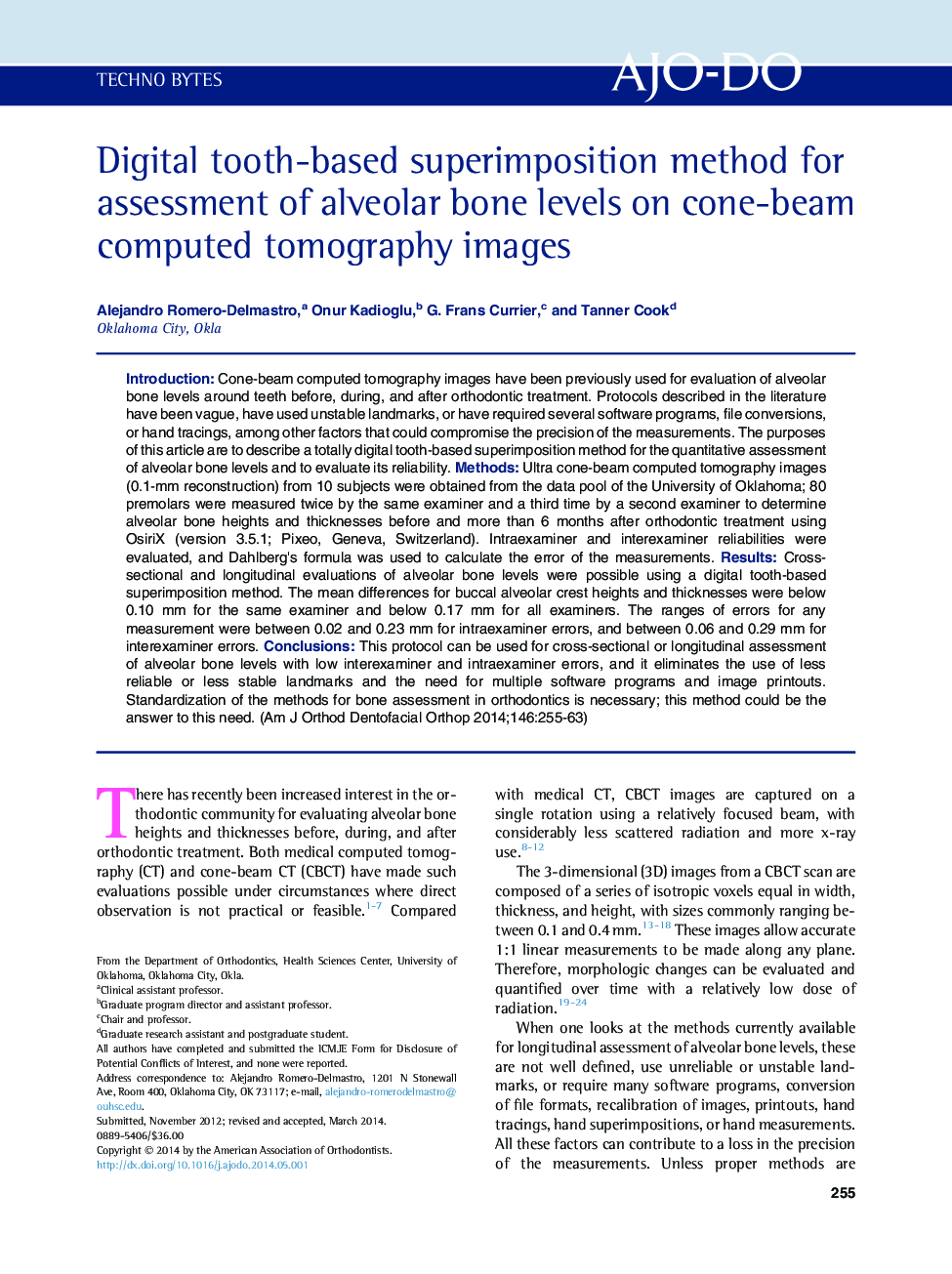| Article ID | Journal | Published Year | Pages | File Type |
|---|---|---|---|---|
| 3116422 | American Journal of Orthodontics and Dentofacial Orthopedics | 2014 | 9 Pages |
IntroductionCone-beam computed tomography images have been previously used for evaluation of alveolar bone levels around teeth before, during, and after orthodontic treatment. Protocols described in the literature have been vague, have used unstable landmarks, or have required several software programs, file conversions, or hand tracings, among other factors that could compromise the precision of the measurements. The purposes of this article are to describe a totally digital tooth-based superimposition method for the quantitative assessment of alveolar bone levels and to evaluate its reliability.MethodsUltra cone-beam computed tomography images (0.1-mm reconstruction) from 10 subjects were obtained from the data pool of the University of Oklahoma; 80 premolars were measured twice by the same examiner and a third time by a second examiner to determine alveolar bone heights and thicknesses before and more than 6 months after orthodontic treatment using OsiriX (version 3.5.1; Pixeo, Geneva, Switzerland). Intraexaminer and interexaminer reliabilities were evaluated, and Dahlberg's formula was used to calculate the error of the measurements.ResultsCross-sectional and longitudinal evaluations of alveolar bone levels were possible using a digital tooth-based superimposition method. The mean differences for buccal alveolar crest heights and thicknesses were below 0.10 mm for the same examiner and below 0.17 mm for all examiners. The ranges of errors for any measurement were between 0.02 and 0.23 mm for intraexaminer errors, and between 0.06 and 0.29 mm for interexaminer errors.ConclusionsThis protocol can be used for cross-sectional or longitudinal assessment of alveolar bone levels with low interexaminer and intraexaminer errors, and it eliminates the use of less reliable or less stable landmarks and the need for multiple software programs and image printouts. Standardization of the methods for bone assessment in orthodontics is necessary; this method could be the answer to this need.
